A Fish With a Big Bang
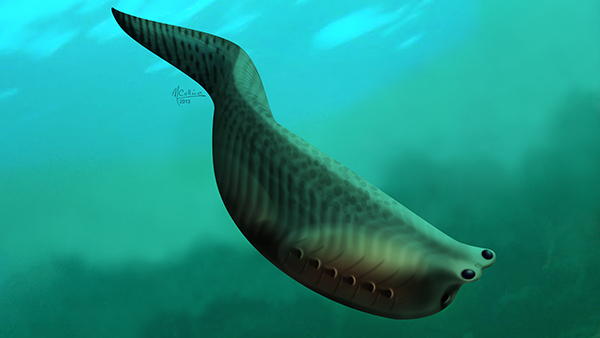
New fossils reveal first hints of the evolution of jaws in primitive fish
Background
Material used for study and new fossil discoveries
We studied about 100 specimens, all dating from the Cambrian Period and coming from several Burgess Shale-type deposits (known for their exceptional preservation of diverse soft-bodied animals). The sites range from roughly 515 to 500 million years in age. Most of the deposits are located in the UNESCO Canadian Rocky Mountain Parks World Heritage Site. The most significant specimens for this study came from a new Burgess Shale locality discovered by a Royal Ontario Museum-led expedition in 2012 near Marble Canyon, Kootenay National Park.
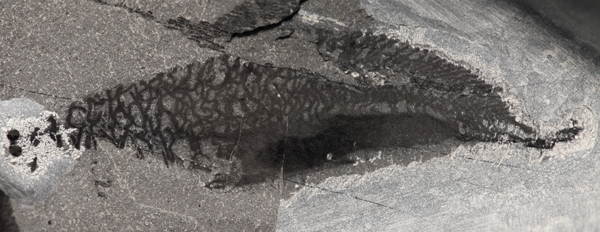
In addition, we studied 44 specimens from another Kootenay National Park locality southeast of Marble Canyon, all of which were preserved on a single slab (what a catch! – see images below); seven new specimens came from the Burgess Shale itself in Yoho National Park. All these specimens were generally poorly preserved, as were four specimens from the eastern USA, which are possibly related to Metaspriggina. However, each of these occurrences is important because together they suggest that Metaspriggina was more common in Cambrian seas around North America than previously thought.
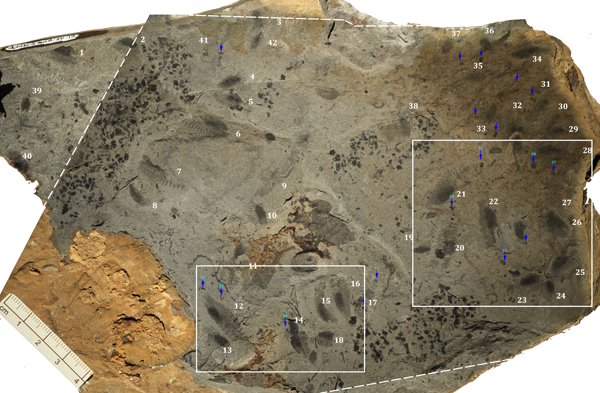
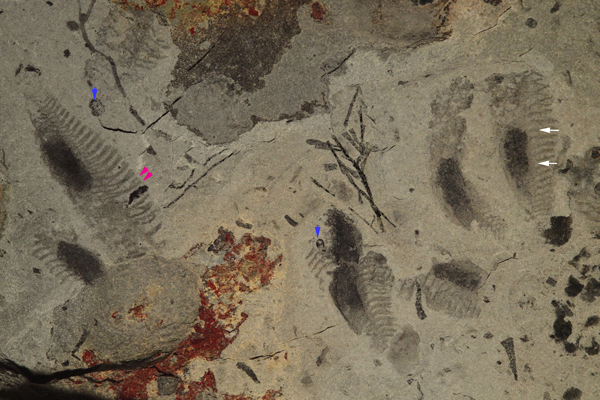
Summary of Key Findings
The exquisite preservation of seven almost identical paired (left and right) branchial bars composed of two elements each (ventral and dorsal) in one of the earliest known vertebrates in the fossil record called Metaspriggina. The first pair of gill arches is more robust than the others and presages the first step in the evolution of the jaws.
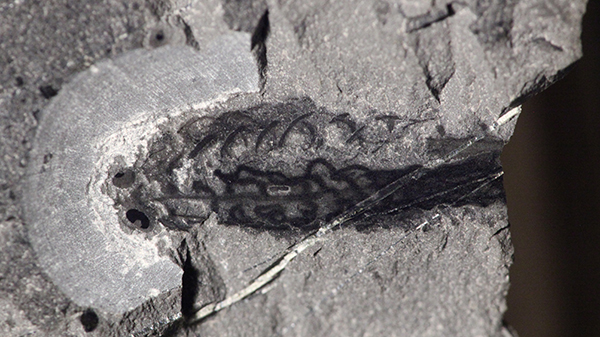
This configuration of similar branchial bars was probably present in the last common ancestor of all vertebrates, first hypothesized by the anatomist Carl Gegenbaur in the 1870’s. Although widely cited, his hypothetical ancestor had never been backed by fossil evidence.
From an animal-like Metaspriggina, the first pair of branchial bars would eventually evolve into oral jaws in vertebrates, while the second pair was used as jaw support with the loss of the remaining five pairs in all vertebrates except in fish where they are used mainly for respiration (gill support) and feeding. Part of the jaw bones eventually evolve into tiny middle ear bones in mammals so clearly the evolution of the pharyngeal bars had a profound impact on how vertebrates look, live, and function today.
Importantly, our study shows that Cambrian soft-bodied fishes from China and North America are morphologically similar and might belong to a group of jawless fish during the Cambrian Period.
What we know about Metaspriggina and its environment after our study
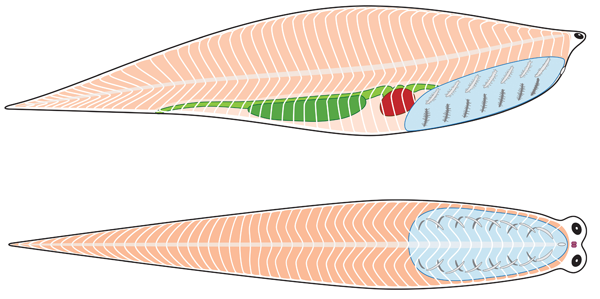
Metaspriggina was a soft-bodied jawless fish which was no bigger than a human thumb (ca. 6 cm in length) although one of the two original incomplete specimens from the Burgess Shale itself, suggests it might have reached 8-10 cm in length. This fish had a small head, a wide anterior area behind the mouth and laterally flattened posterior area.
It did not have bones but possessed a possible cartilaginous skull and small structures precursors to vertebrae (called arcualias) - as well as a flexible rod of tissue called a notochord (the latter two structures forming part of the backbone in vertebrates). The mouth was just at the front of the fish just below and behind the eyes and led to a large internal cavity lined on either side by seven pairs of cartilaginous pharyngeal bars which would have functioned for both filtration of food particles, and respiration (gills are present from the second pair of pharyngeal bars). The head was flattened at the rop, and bore a pair of large camera-type eyes. A pair of small nasal sacs just behind the eyes along the middle would have allowed the animal to sense its environment.
Animation © Phlesch Bubble
The presence along its entire body of typical vertebrate W-shaped muscle bands, akin to those that you see on your favourite salmon steak, suggests this fish was an effective swimmer (see reconstruction above), however it might not have had fins or fins were not preserved. This animal would have lived near the bottom of the sea as indicated by its mode of feeding and the position of the eyes. The latter would have been useful to detect potential predators coming from above and therefore a mode of life near the bottom of the sea (benthos) seems more plausible. This is also indirectly suggested by the fact that we find so many Metaspriggina specimens fossilized today, preserved by turbulent mudflows in what was once the bottom of the sea. Numerous arthropods of various sizes, shapes and ecologies, including possibly giant predators such as Anomalocaris an amimal which might have reached half a meter in length or more were preserved together with Metaspriggina. There were also bristle worms (polychaetes) living in or along the muddy sea bottom at the time.
What's next?
A new Royal Ontario Museum-led expedition will return to Kootenay National Park this summer with the hope of uncovering new Burgess Shale-type Cambrian fossil sites and specimens, including new specimens of Metaspriggina and possibly other fish species. While we understand this animal far better now, there remain many questions, in particular its anatomy (Did it have fins for example? Is there any evidence of sexual morphological variations), size (How big was it?), preservation and distribution (Why is this fish more common at certain sites than others?). Also, are there any other fish species out there that have yet to be known?
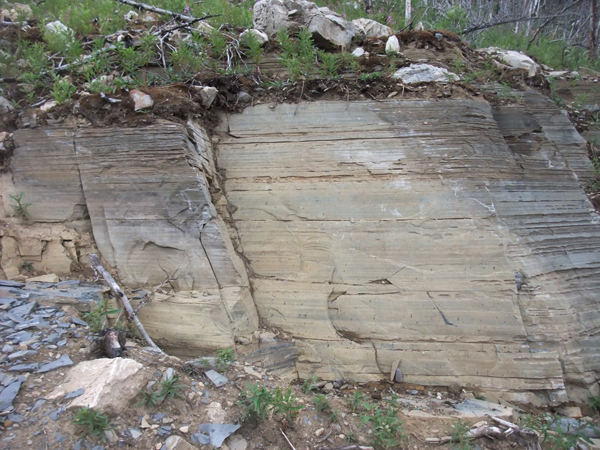
Credits
Want to read what others are saying about Metaspriggina?
Here’s just a sample of some of the news coverage about this remarkable discovery.
Tom Spears, Ottawa Citizen – Life before jaws: Meet your ancestor
Kate Allen, Toronto Star – Incredible’ fossil find pinpoints a never-before-seen moment in the rise of our ancestors
Margaret Munro, Postmedia News – Fishing for evolutionary secrets in the Rocky Mountains
Emily Chung, CBC News – Ancient Rockies fish fossils reveal origin of jaws
Carrie Tait, The Globe and Mail – Feature key to evolution found in fossil in Canadian Rockies
Carl Zimmer, New York Times – A Long-Ago Ancestor: A Little Fish, With Incipient Jaws
Tia Ghose, Live Science – Tiny Fish May Be Ancestor of Nearly All Living Vertebrates
El Mundo – Un pez de hace 500 millones de años desvela el origen de las mandíbulas en los vertebrados
Der Standdard.at – Ein Maul öffnet das Tor zur Welt
Русская планета – Главрыба
